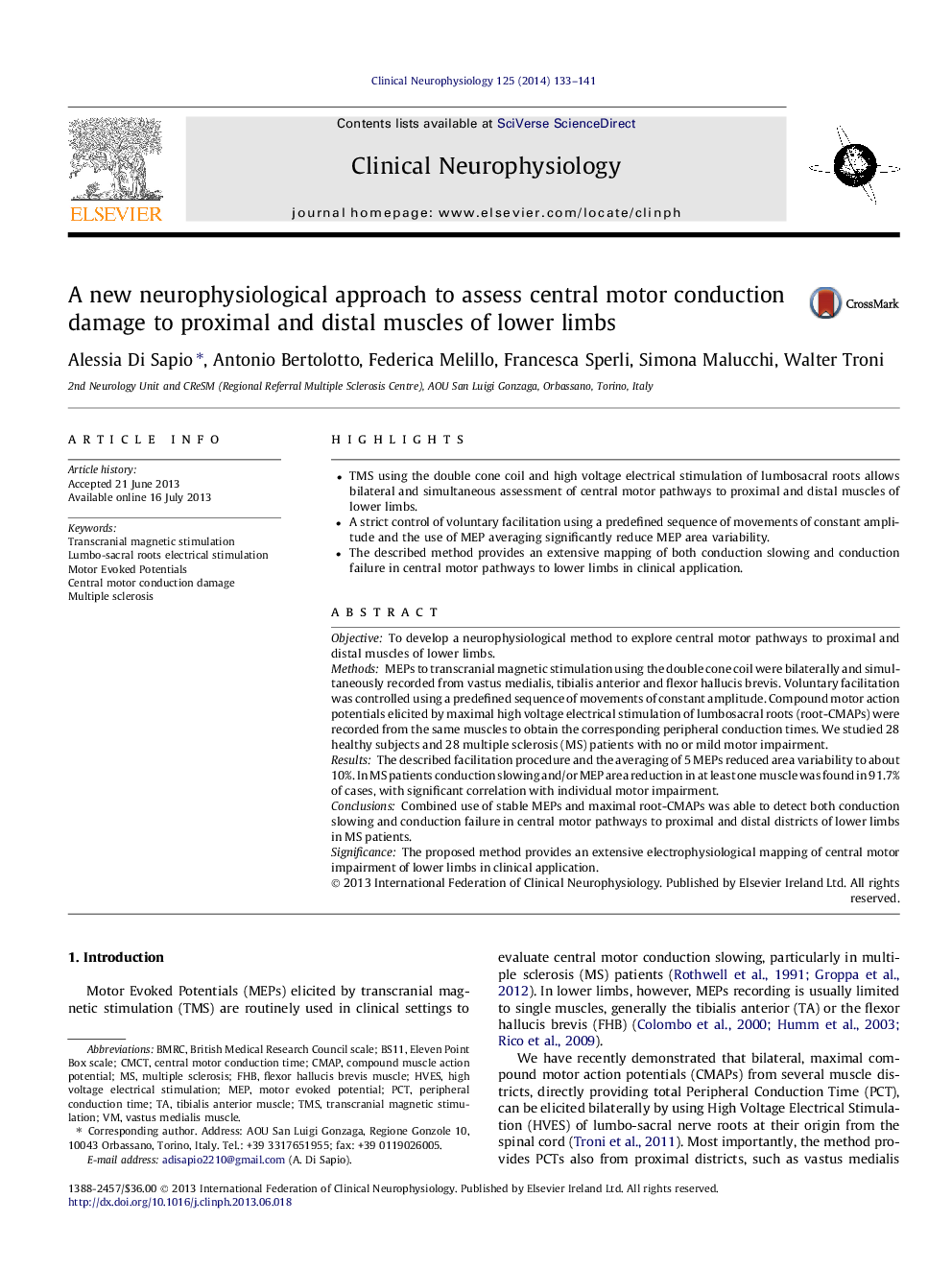| Article ID | Journal | Published Year | Pages | File Type |
|---|---|---|---|---|
| 3043641 | Clinical Neurophysiology | 2014 | 9 Pages |
•TMS using the double cone coil and high voltage electrical stimulation of lumbosacral roots allows bilateral and simultaneous assessment of central motor pathways to proximal and distal muscles of lower limbs.•A strict control of voluntary facilitation using a predefined sequence of movements of constant amplitude and the use of MEP averaging significantly reduce MEP area variability.•The described method provides an extensive mapping of both conduction slowing and conduction failure in central motor pathways to lower limbs in clinical application.
ObjectiveTo develop a neurophysiological method to explore central motor pathways to proximal and distal muscles of lower limbs.MethodsMEPs to transcranial magnetic stimulation using the double cone coil were bilaterally and simultaneously recorded from vastus medialis, tibialis anterior and flexor hallucis brevis. Voluntary facilitation was controlled using a predefined sequence of movements of constant amplitude. Compound motor action potentials elicited by maximal high voltage electrical stimulation of lumbosacral roots (root-CMAPs) were recorded from the same muscles to obtain the corresponding peripheral conduction times. We studied 28 healthy subjects and 28 multiple sclerosis (MS) patients with no or mild motor impairment.ResultsThe described facilitation procedure and the averaging of 5 MEPs reduced area variability to about 10%. In MS patients conduction slowing and/or MEP area reduction in at least one muscle was found in 91.7% of cases, with significant correlation with individual motor impairment.ConclusionsCombined use of stable MEPs and maximal root-CMAPs was able to detect both conduction slowing and conduction failure in central motor pathways to proximal and distal districts of lower limbs in MS patients.SignificanceThe proposed method provides an extensive electrophysiological mapping of central motor impairment of lower limbs in clinical application.
